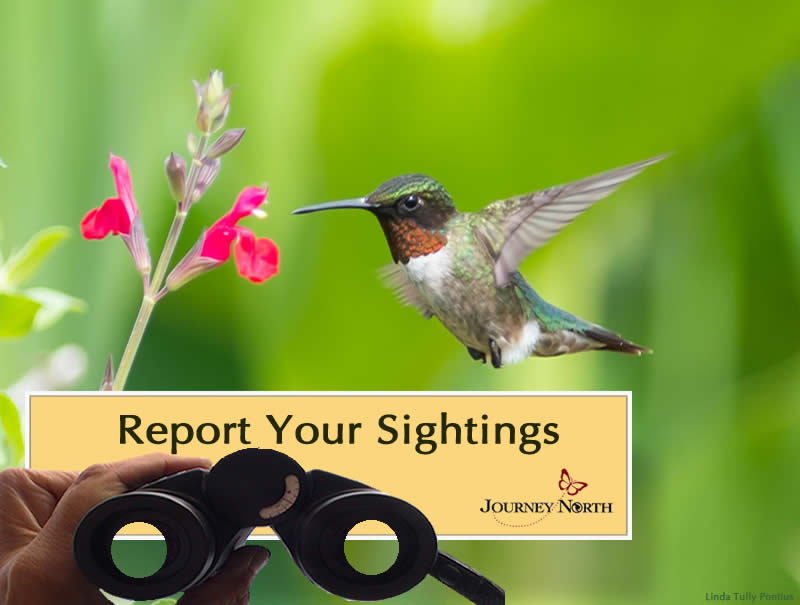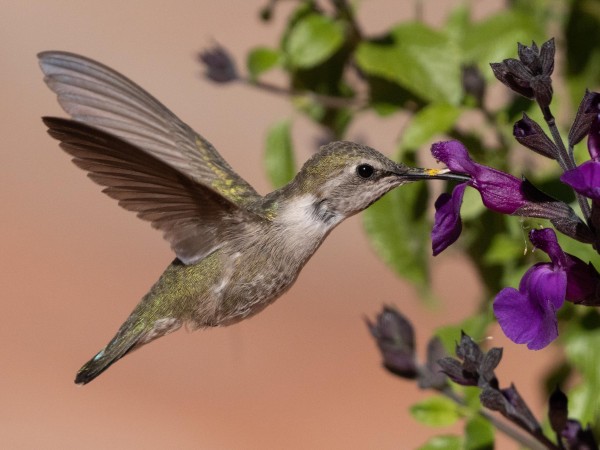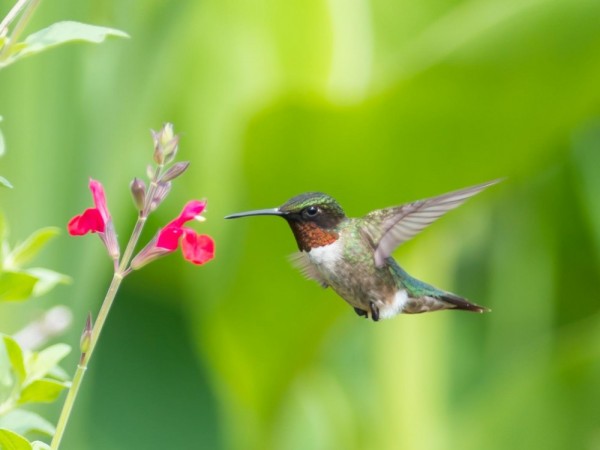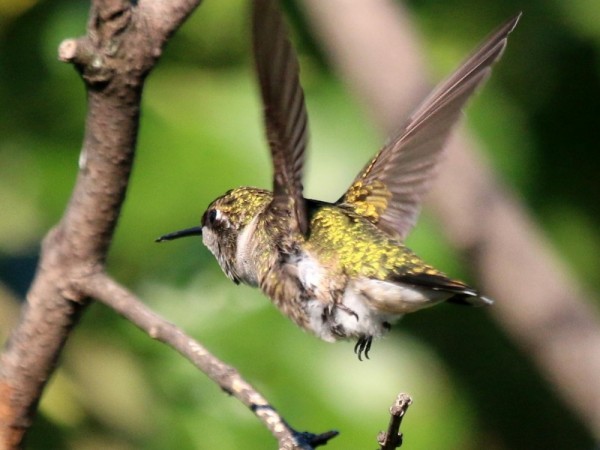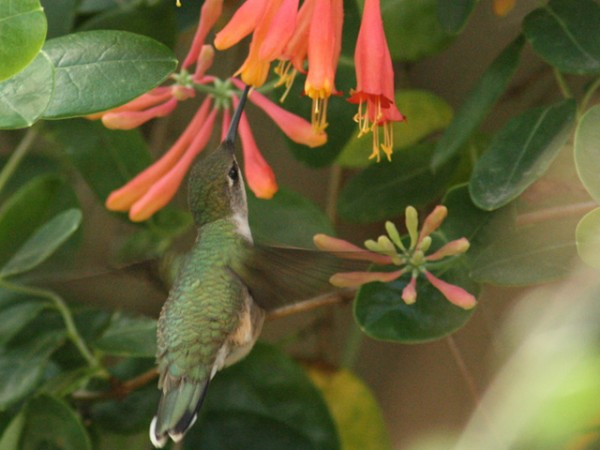Waiting for Arrivals
Migration activity is low but that's normal during the early stages of the season. Things can change quickly! Remember to report hummingbird observations to Journey North.
Ruby-throats and Rufous
Only a few reports of migrating Ruby-throated and Rufous Hummingbirds have come in. Spring migration is still in the early stages. The coming weeks should see migration significantly increase. Explore our maps to see how the start of this season compares to previous years.
Jim in Trinidad, CA: "First Rufous of the year for us on the far north coast of California. This is a male Rufous, returning to a feeder that they favor at our house each year. Resident Anna's are disturbed, but no major fights have broken out." (02/08/2021)
Arizona is a Hotspot
Marjorie, a longtime Journey North participant, is reporting a number of different species in Tuscon, Arizona:
Marjorie in Tucson, AZ: "There are flowers in bloom in Tucson at Tohono Chul Park, the local botanical gardens. This is most likely a female Costa's Hummingbird feeding in the penstemon garden." (02/24/2021)
Marjorie in Tucson, AZ: "Female Anna's Hummingbird on the purple salvia." (02/24/2021)
Marjorie in Tucson, AZ: "We have put up a second feeder and have attracted more birds. This is a female Broad-billed Hummingbird at the salvia from the garden center." (03/01/2021)
Spring Migration: What to Report
A note about reporting "FIRST" observations: "FIRST" refers to migrating hummingbirds – not first of the year observations. During this early period of migration, please share if you think you've observed a migratory hummingbird or a winter resident. And if you're uncertain, please let us know. Winter residents, such as the hummingbirds highlighted in Sarah's report below, should be reported under Hummingbird (OTHER Observations).
Sarah in Deerfield Beach, FL: "Have had a male and female [Ruby-throated Hummingbird] all season (since at least early Nov. when first spotted). Nectaring from flowers and feeders." (02/15/2021)
Journey North hummingbird reporting categories review:
- Ruby-throated Hummingbirds: When will migratory Ruby-throated Hummingbirds first arrive? Report under the category: Hummingbird, Ruby-throated (FIRST)
- Rufous Hummingbirds: Migration significantly picks up in mid-March. Report under the category: Hummingbird, Rufous (FIRST)
- Other Species Sighted: Other species tracked include Broad-tailed, Black-chinned, Allen’s, Costa’s, Calliope, and Anna’s Hummingbirds. Report under the category: Hummingbird, Other Species Sighted
- Other Observations: Report observations such as courtship, territorial, and nesting behavior. Report under the category: Hummingbird (OTHER Observations)
- Hummingbirds Nectaring From Flowers: Report hummingbirds you see nectaring at flowers. Try to include the name of the flower. Report under the category: Hummingbird, Nectaring from Flowers
If possible, photos are always helpful to include in reports. However, hummingbirds are not always cooperative subjects. One potential workaround is to take a video and then extract a screenshot to use as a photo. Learn more in the tutorials below:
Prepare for Arrivals
Hummingbirds need a steady supply of food to fuel their migration. Finding nectar sources can mean the difference between life and death. If you live in an area where you observe early migratory arrivals, put your feeders out. Potted nectar plants can also be an important food source as many spring gardens have yet to develop. And depending on your location, start planting brightly-colored native flowers to provide pollinator habitat for hummingbirds and other species such as monarch butterflies. Remember, hummingbirds are attracted to the bright colors, not smell.
Identification Resources
Due to their small size, quick movements, and overlapping distribution, hummingbird identification can be tricky. Here are a few helpful resources:


